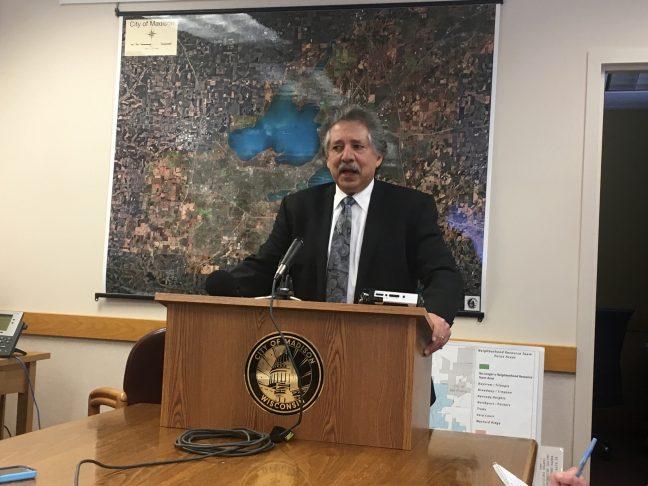Madison Mayor Paul Soglin spoke against amendments to the so-called panhandling ordinance at a press conference Wednesday.
For the past several months, Soglin and the Madison City Council have been battling over the ordinance, which would ban people from standing out on street medians. The most recently revised proposal, approved by the City-County Homeless Issues Committee Monday, would only apply the ban to a list of 85 arterial streets and high-capacity city roads.
Soglin originally proposed the ordinance for all Madison roads, because he saw panhandling as a public safety concern. City council, however, has expressed concern that a ban on all streets would be a violation of free speech.
Some city alders have argued the ordinance was not actually created to address public safety.
The new proposal includes four amendments. It would require police to issue a written warning at a specific location before they issue a citation. Police would also have to escort homeless individuals to the nearest lawful area instead of ticketing them.
The city would have to add signs on streets where the ordinance is in effect and the City Council would require a staff report after the ordinance was in place for six months.
Proposed street median restrictions could prevent panhandling
Soglin said the city tries to not clutter the landscape with signs, but this amendment would add thousands of signs and take several months to put them in place.
In the original proposed ordinance, Madison Police Department officers were able to enforce the policy without specific instructions, Soglin said. The revised ordinance, however, includes recommendations on how police officers should respond to panhandling incidents, a provision that Soglin dismissed as unnecessary micro-managing.
Soglin argued the recent amendments are designed to either obstruct the adoption of an effective ordinance or give political cover to those fighting the proposal.
Soglin said the city needs a majority of the city council to realize the safety hazard of people being in the medians and be willing to trust MPD.
“I just can’t believe that an ordinance which is designed to prevent accidents and injury and death is going to be challenged [when] it doesn’t specifically spell out panhandling,” Soglin said.
Soglin said he personally witnessed safety problems on the roads while there are panhandlers. Well-intentioned drivers will weave in or out of lanes to get closer to or away from panhandlers.
Soglin said he is concerned with the new revisions to the ordinance because some streets that are not arterials still have people on the medians, especially cross-streets.
The city council is expected to make final decisions on the ordinance early next year.












